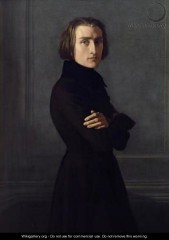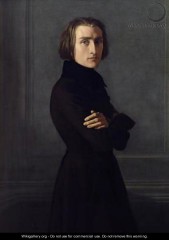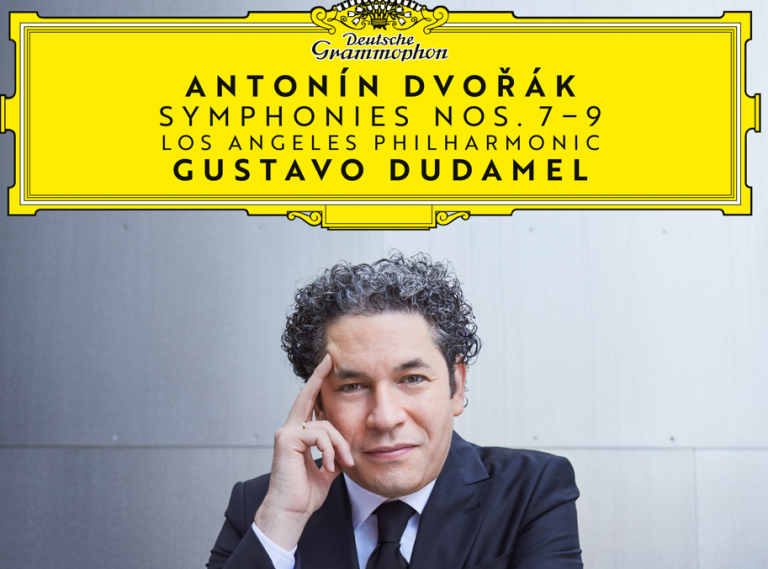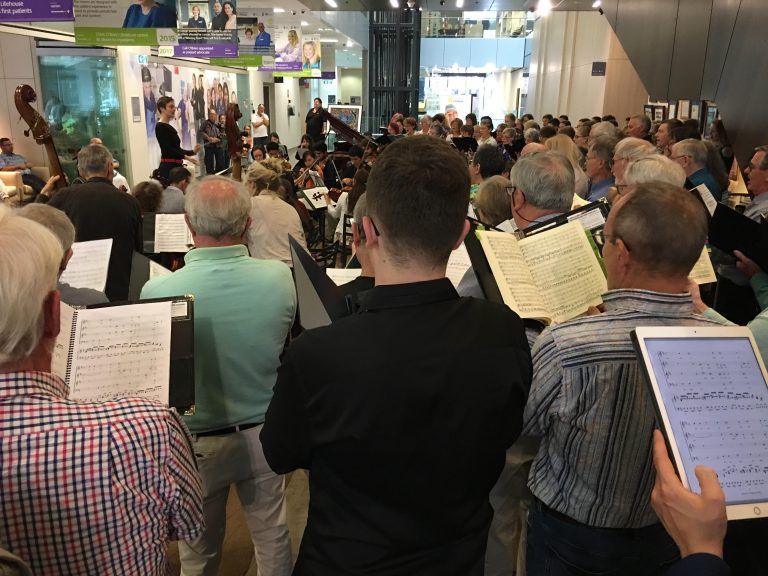Liszt Lives – David Trippett Talks About Reconstructing Liszt’s Opera Sardanapalo

Once in a while, the music of the great masters has a renaissance with the discovery and reconstruction of a long forgotten score. Pianist, musicologist and writer Dr David Trippett is rebuilding the first act of Franz Liszt’s incomplete opera Sardanapalo. Liszt abandoned this score in 1851, which the Cambridge academic has painstakingly restored in keeping with historical practices.
A critical edition of the music will be published by Editio Musica Budapest and a You Tube documentary featuring soprano Anush Hovhannisyan, Australian tenor Sam Sakker and bass-baritone Arshak Kuzikyan will be released on May 15. Anush Hovhannisyan will perform an excerpt at the 2017 Cardiff Singer of the World Competition in June.
There are so many questions to be asked about this intriguing project and how Dr Trippett reconstructed the music, we plied him with just some of the questions and here is what he said:
SLS: How did you come to discover this fragment in Weimar?
DT: Liszt’s manuscript for an opera based on Lord Byron’s tragedy Sardanapalus has been known to Liszt scholars at least since the early twentieth century. It was catalogued by Peter Raabe in 1910-11 in his overview of Liszt’s belongings in Weimar, but was always assumed to be fragmentary, partially illegible, and incoherent – a collection of ideas that were the beginnings of musical themes for a work, but nothing more.
The libretto too, exists only as rapidly sketched text underlay in the music manuscript; there is no separate document containing the actual text Liszt set. Since Liszt was writing quickly, and his Italian was relatively poor, this text is hard to decipher. It contains errors of spelling and grammar. The manuscript’s extremely scruffy appearance contributed to the sense that this material was either insubstantial or irretrievable, perhaps both.
As a student in Leipzig, I knew of the manuscript, so I hopped on the train to Weimar to take a look at it. I’d already spent years studying the 19-year evolution of the ‘Dante’ sonata, so I knew Liszt’s handwriting and editorial practices well. I was engaged in a lot of song accompaniment at the time, and was intrigued by the possibility of discovering something unfamiliar in this vein.
SLS: What went through your mind when you first saw it?
DT: When I first opened the manuscript for the opera, the first item I saw appeared to be a beautiful aria for lyric soprano. There was a feeling of electric excitement. Why had nobody looked closely at this before? I listened to the aria in my head: it made musical sense, it was syntactically complete, and it had ravishingly beautiful, soaring lines. In fact, I couldn’t get it out of my head for the whole of the next week. If even this one aria alone could be performed it would be worthwhile. That was the moment I thought this music needs to be rescued, that it needs to be scrutinized in detail to see just how complete Liszt’s notation actually is.
SLS: What was the score like – were there erasures and changes or was it quite flowing?
DT: This was difficult to ascertain in advance of the detailed, forensic work. The manuscript appears to be very scruffy, with deletions, multiple revisions and alterations (detailing at least two separate stages of working), and a number of gaps. This gave the impression of something discontinuous. Furthermore, the manuscript is not used efficiently; in addition to the gaps, only 6-8 staves are typically used on the 10-stave paper.
The first task was to transcribe the entire manuscript. This was not straightforward: various passages are unclear, and needed to be cross-referenced back and forth within the score to comparable passages in order to become decipherable. As I worked, it became clear that the music was forming a continuous fabric. With each page, I had the sense that a working pattern was emerging, where Liszt had evidently thought through the musical detail in his head (perhaps also at the piano) prior to setting pen to paper. This was very useful when working through the particularly difficult sections because I felt guided by Liszt’s established working pattern: if the music looked confusing that was a problem of knowing how to read the score rather than an incomplete musical conception. Liszt evidently knew exactly what he wanted, and it was only a case of using all the available evidence to find out exactly what that was.
Happily, there was no need for ‘creative’ input from me in order to retrieve this music. With very few exceptions, Liszt specifies all of the music’s cardinal elements: harmony, melody, rhythm, texture, counterpoint, etc. The difficulty was understanding how he had notated these. The music is often in abbreviated forms of notation. It remains Liszt’s music, but deciphering it, getting to the point where it was possible to understand what was encoded in the manuscript, was slow, painstaking work.
SLS: In the video trailer you talk about tracing the artistic decisions in the manuscript and reconstructing the creative process to see how Liszt’s mind would have worked. How did you get inside his head?
DT: The manuscript was intended for Liszt’s eyes only, not for publishers or copyists, so there are many aspects in which it is not immediately clear (this despite the fact that Liszt had evidently reached a full and continuous conception of the music he notated). One passage is written in ¾ but Liszt begins to re-write it in common time, though it isn’t fully renotated: should an editor go with the first metre or the second? Another passage contains an Italianate march that has an accompaniment that breaks off, becoming a bare bass line, and then a vacant stave for about 40 bars beneath continuous vocal parts: how should an editor extract the intended accompaniment? In the first case, Liszt notates the same material in a different key later on, notated in common time; using this model, it was possible to work out the precise revision to common time that he intended for the earlier passage. In the second case, the accompanimental pattern is formulaic, and it seems Liszt simply felt it unnecessary to belabour his task by writing it out in full. In other words, it was so obvious, he evidently felt it didn’t need writing out. I simply needed to continue the pattern, taking the bass line for harmonic direction and voice leading; where this peters out, there are brief moments where I needed to work out the harmony, but the Bellinian language has strict stylistic boundaries, so it was eminently possible and a rare and exciting challenge.
SLS: How would you describe the sound and style of ‘Sardanapalo’?
DT: The opera was born of ambition, and it sounds like that. Liszt was emulating giants of Italian opera – Bellini, Rossini, Donizetti – while also making a statement about progressive art, about how Italian opera needed to develop to embrace the future needs of character development, declamatory melody and find a post-Meyerbeerian style. There is a striking blend of Italianate idiom and Germanic harmonic expressivity in Sardanapalo. We hear some recognizable pastiche alongside quite radical harmonic moves (tertiary relations, enharmonic sidesteps, and unusual chromatic sequences). But above all, the rich melodic lines and harmonic language are characteristic of Liszt, so it feels rather unique – a mature opera in Liszt’s unmistakable lyrical style.
SLS: What will be the end point of this project- will it stop with a recreation of the first act or are you burning to construct a fully staged three-act opera with orchestra, soloists and chorus?
DT: Alas, it would be impossible to recreate acts 2-3 because there are no materials—neither musical sketches nor libretto—on which to base any reconstruction. Hence, anything would be creative composition, and couldn’t really be said to have anything to do with Liszt. That said, I do believe that Act 1 works perfectly well as a stand-alone piece: the narrative is complete, and the music is rounded and satisfyingly shaped, with some amazing high points and dramatic tension. Since we know that Byron’s tragedy was the source for Liszt’s libretto, a director could use this to elaborate a staging of Act 1. I think that would be very exciting.
SLS: Who are the characters and is there a chorus?
DT: The opera opens in the harem of King Sardanapalo (heroic tenor), the last king of Assyria. He is a peace-loving monarch, more interested in revelry and women than politics and war. A chorus of young concubines sing of their ecstasy in the royal palace and praise Mirra (lyric soprano), a Greek girl and favourite of the King, whom he has taken from her homeland. Mirra has very mixed feelings: torn between her genuine love of the King, and guilt at loving an unrespected man who conquered her homeland. She calls herself “a slave mocked by fate”.
The final character, Beleso (bass–baritone), is an elder statesman, a military man and astrologer. He foresees the downfall of the King, and urges him to “set aside the [womanish] spinning spindle and grasp the sword”.
SLS: The existing score had just a piano part accompanying the voice. In June, an orchestrated excerpt will be performed at the Cardiff Singer of the World Competition. How will you choose what instruments to include and what principles will you use to write these parts?
DT: Liszt’s manuscript contains some instrumental cues and specifies certain aspects of an orchestral texture. Based on this information, I’ve orchestrated the music in as sympathetic a way as possible. Where there is nothing to go on in the score, I’ve turned to the music in which Liszt was immersed at the time: the repertory of Italian operas, Beethoven’s Fidelio, Wagner’s Tannhäuser and Lohengrin, and one or two other works. Some of the symphonic poems were underway at the time, so I’ve made frequent reference to the detail within these scores to ensure that the orchestration is stylistically as close as possible to Liszt’s ‘orchestral imagination.’
SLS: Liszt wrote much choral music and many songs, but hardly any operatic music. How does he treat the operatic voice – do you think he understands it and writes well for it?
DT: I find it extremely beautiful and affecting. When I worked with the three singers to record the complete opera, I think they were initially surprised by some of the writing. The lines don’t necessary unfold in the way you might expect, but as you become more familiar with the score, they make perfect sense, and I think we all grew with the music. There is no doubt Liszt understands how to write for the voice, indeed his music is suffused with lyric melody and it is impossible to play the piano works without both a rich sense of the sound images of the keyboard and the primacy of singing melody. This opera simply makes this more explicit, which is why it appears to be such a valuable work, historically and aesthetically.






